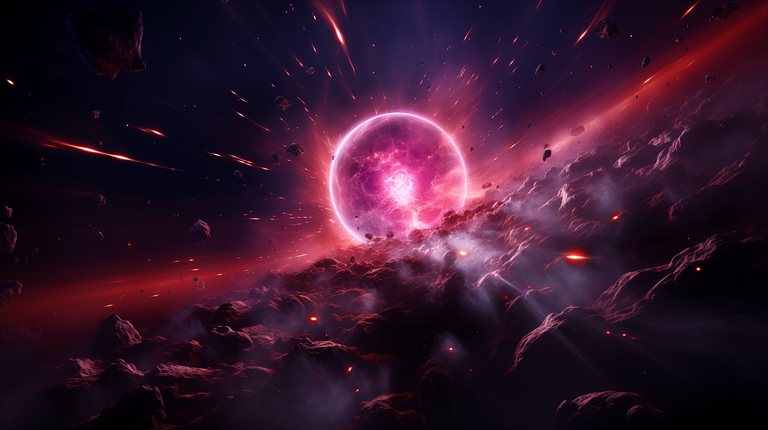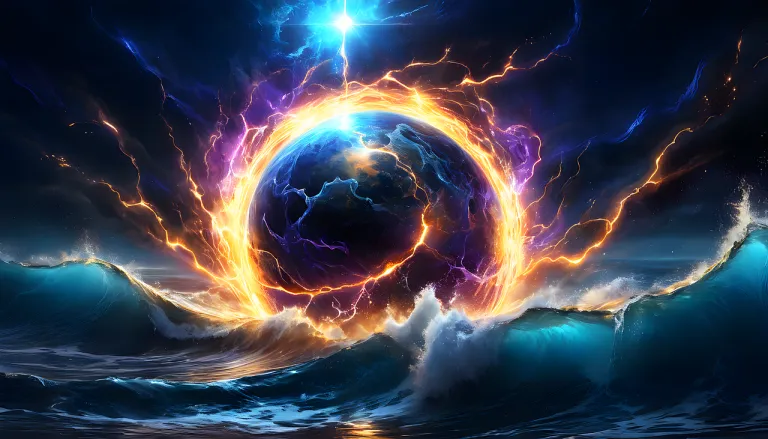Among the brightest yet still unsolved phenomena in the universe, kilonovas are among the highest-ranked. They happen always when two neutron stars or neutron star and black hole combine and collide violently. These cosmic catastrophes emit an immense amount of energy; light and ripples in the fabric of space time called gravitational waves that humans can detect on our planet. The first direct observation of a kilonova was made in 2017 when the LIGO and Virgo observatories detected gravitational waves for the first time and opened people’s eyes to the universe.

What is a Kilonova?
So the phenomenon is called Kilonova, which reflect the scale of these events. The prefix ‘’kilo’’ comes from the explosion which is nearly 1000 times that of a classical nova. However, unlike a supernova, which is a star's explosive death, a kilonova is caused by the merging of two ultra-dense remnants: neutron stars. These stars are the accretions of the massive stars after they have exploded in star supernovae but not created black holes. In their place, they transformed into extremely compact objects whose masses were of a solar order, but the diameter was only several tens of kilometers.
When two Neutron stars orbit each other and merge at the end they emit a great burst of light, called a kilonova which is visible for a few days to weeks. This intense display is also characterised by the launching of gravitational waves – distortions in spacetime that Albert Einstein postulated. The light also produced within a kilonova is also different since it is known to turn from blue to red in the process of formation of new heavy elements in the sky, following the explosion.

Exploring the Part of Kilonovas in Element Formation
Kilonovas carry a significant process of making heavy elements in universe. The kind of nuclear fusion that occurs in the tremendously violent collision of neutron stars with one another is known as the “r-process.” This process is credited for catalyzing the creation of some of the densest substances on the universe including gold, platinum and uranium. Researchers are convinced that a considerable part of the heavy elements to have ever existed on earth has been synthesized in kilonovas that lit the universe billions of years ago, which makes these activities a crucial part of the formation of planets and possibly even life as we know it.
Until the recent discovery, the sources of these compounds remained unclear and theories placed their origin from supernovae explosions. That’s true, but the observation of the kilonova associated with the gravitational wave source GW170817 in August 2017 was direct evidence that neutron star merger is indeed the source of heavy elements. Observations of this kilonova also showed that massive quantities of gold and platinum are being formed, in fact, quantities several times the mass of the Earth.

Kilonovas and Gravitational waves
The detection of gravitational waves this year continued to be phenomenal when it was first made by LIGO or Laser Interferometer Gravitational-Wave Observatory. These waves, ripples in space-time generated by acceleration of objects such as black holes and other neutron stars opened a new way of observing the world. Kilonova observed in 2017 was the first time when gravitational and light waves were observed from the same event, called ‘multi-messenger ‘ era.
Another advantage of accounting both gravitational waves and the bright light produced in a kilonova is that scientists would be able to learn more about the physical properties of exotic states and manners of matter and neutron stars’ interior. Every observation helps to gain more information on the solution to some of the most profound questions in astrophysics.

Kilonovas are very rare, however, they influence our knowledge about the Universe significantly. These magnificent Galactic fire works enlightened as how the basic elements of life are created in space and presented a unique methodology to gaze space through gravitational waves. The discovery of kilonovas is only the beginning; as the technology of gravitational wave detectors improves, and as astronomers learn new ways to detect and study these short-lived phenomena, kilonovas will emblemize the ongoing expansion of mankind’s knowledge of the cosmos.

All pictures were gotten from pixabay